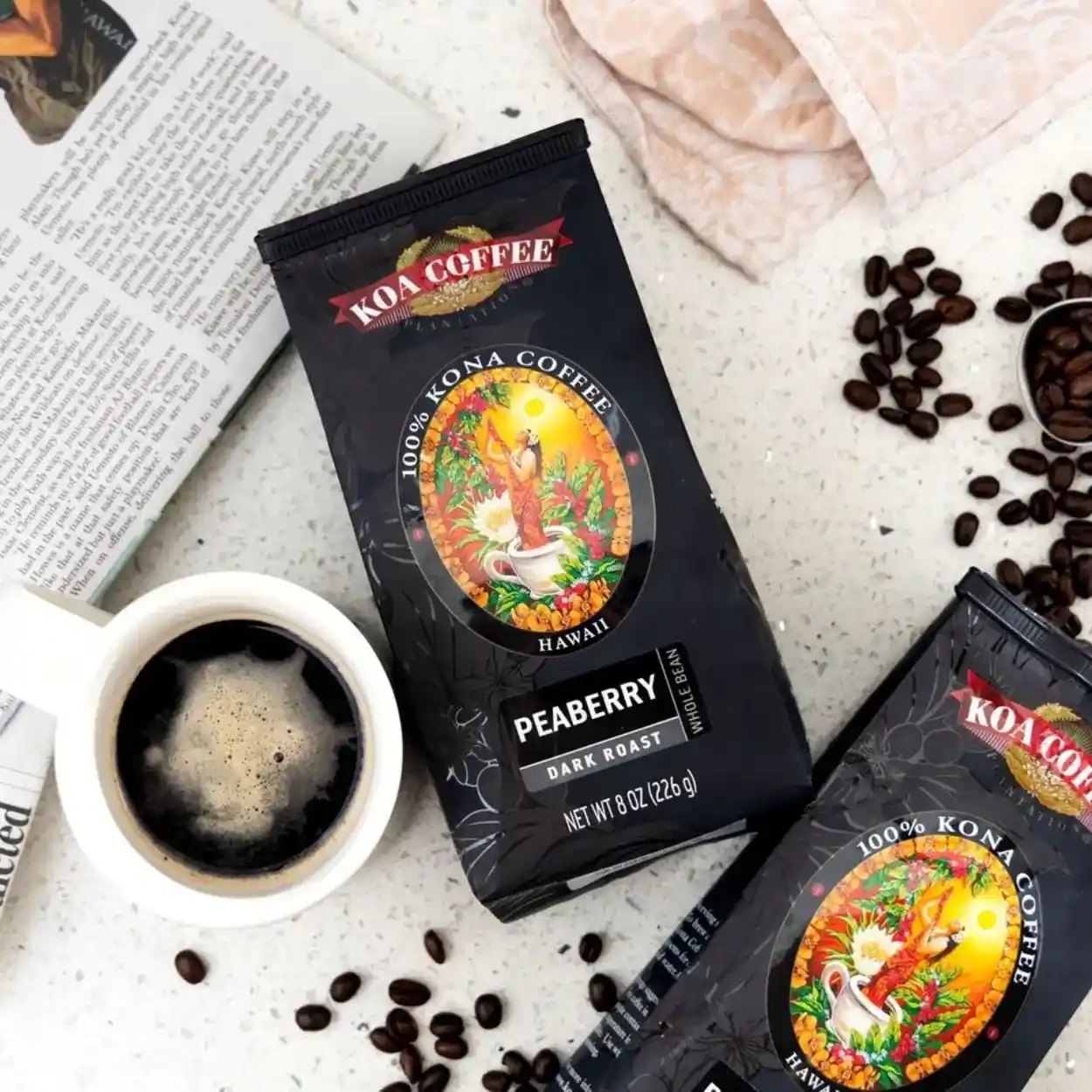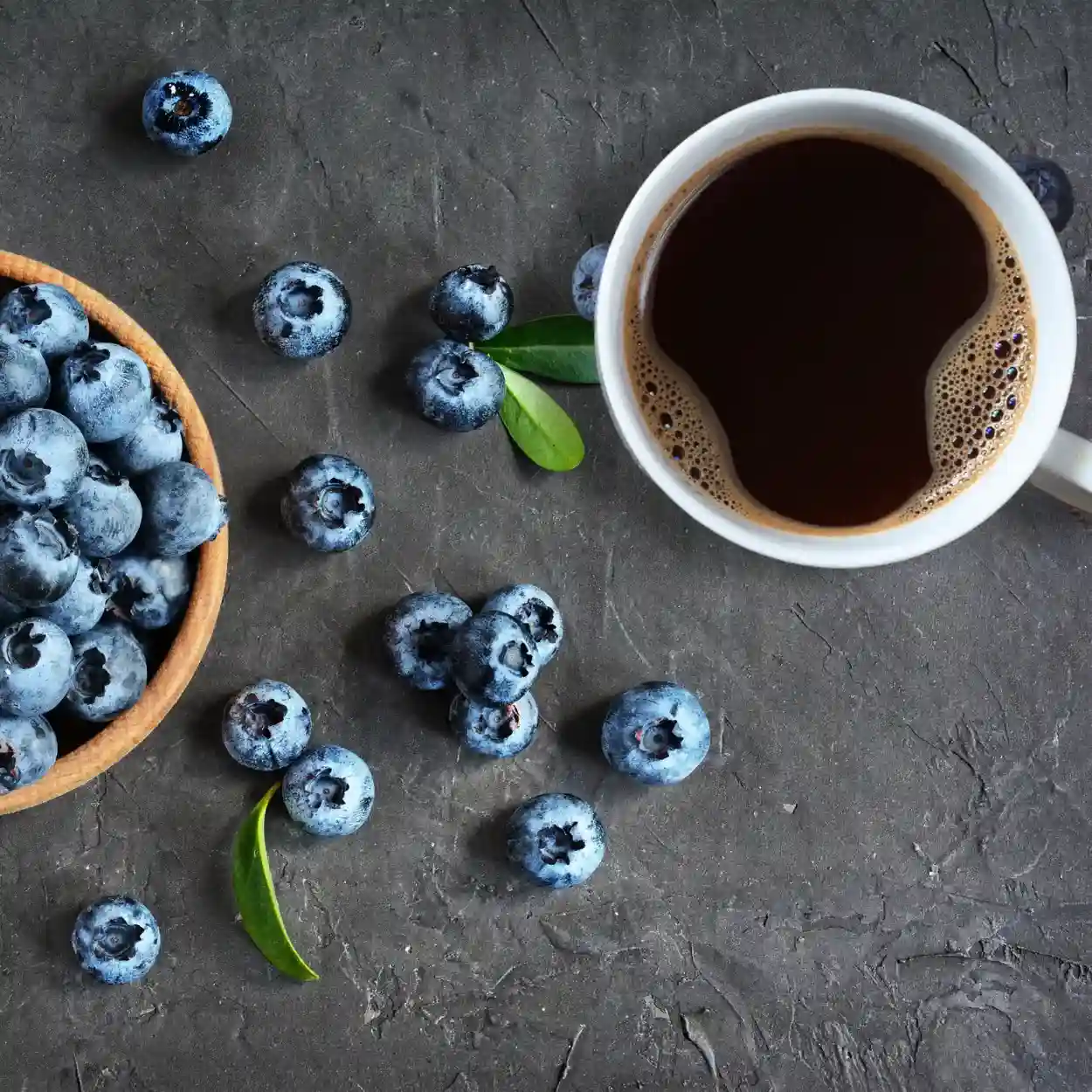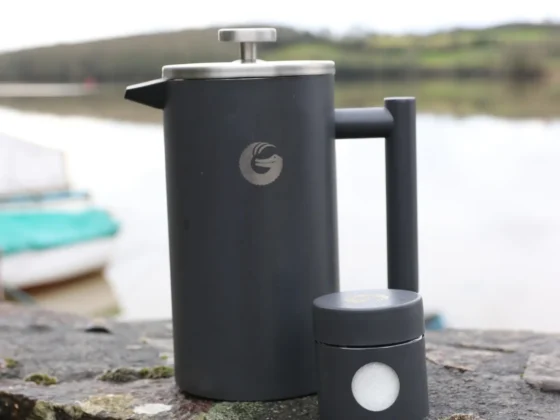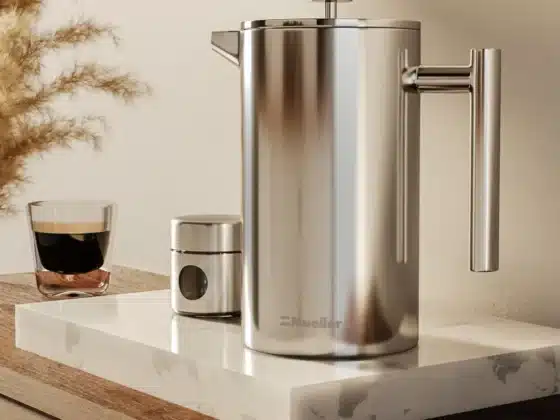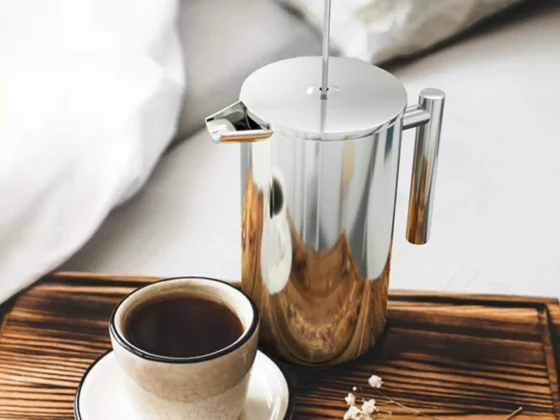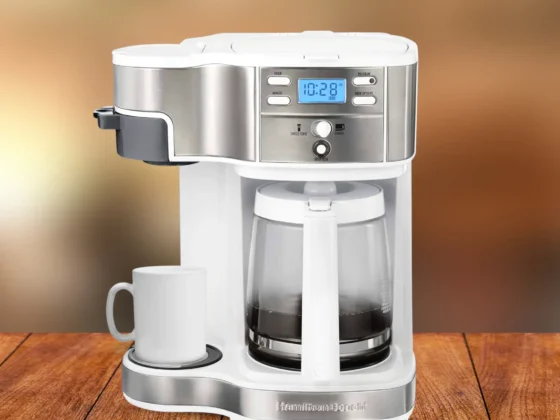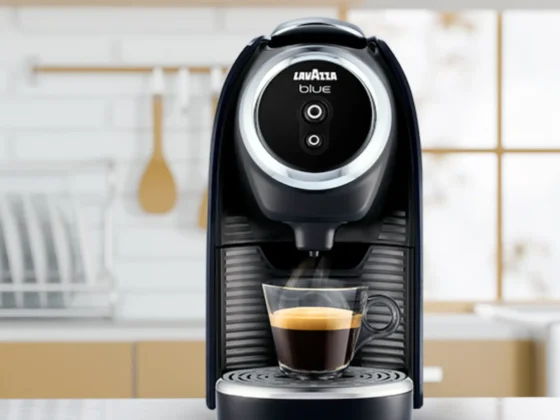In the vibrant world of coffee connoisseurs, finding the Best Whole Bean Decaf Coffee can be a quest akin to seeking the Holy Grail. Many of us cherish the deep flavors, aromatic allure, and comforting ritual that a cup of joe brings to our mornings. But for those looking to reduce their caffeine intake, navigating the decaf scene can be a bit daunting. This guide is here to simplify that journey for you. Diving into the realm of decaf whole bean coffee, we’ll unveil the top picks that don’t skimp on flavor or freshness. So, whether you’re a seasoned coffee lover or a newcomer just discovering the nuanced notes of decaffeinated coffee, prepare to embark on a flavorful expedition like no other.
Whole Bean Decaf Coffee: Key Takeaway
- Quality Uncompromised: Decaffeination doesn’t mean sacrificing taste or aroma. The best whole bean decaf coffee brands ensure that the coffee retains its rich and full-bodied flavor, even without the caffeine.
- Decaf Processes Matter: Different decaffeination methods can affect the coffee’s flavor profile. Brands like Phil & Sebastian and Cooper’s Cask Coffee employ distinct processes, such as the Ethyl Acetate and Swiss Water Method, to preserve the coffee’s natural essence.
- Variety in Taste: Decaf coffee can present a wide spectrum of tasting notes, from caramel-hued sweetness and cocoa undertones in some brands to hints of chocolate orange and black tea in others. There’s a decaf flavor to suit every palate.
- Beyond the Brew: Decaf coffee has extended its charm into the culinary world. It can be paired with a range of foods, incorporated into desserts, and even used in gourmet dishes, ensuring a holistic coffee experience.
- Health and Decaf: While some misconceptions exist about decaffeinated coffee, the truth is that it offers several health benefits without the side effects of caffeine. Whether it’s for health reasons or personal preference, turning to decaf doesn’t mean missing out on the coffee culture.
Top 5 Whole Bean Decaf Coffee Brands in 2023
In recent years, the allure of whole bean decaf coffee has grown exponentially. As we enter 2023, coffee enthusiasts worldwide are hunting for the best whole bean decaf coffee brands to satiate their cravings, minus the caffeine kick. The spotlight today is on five brands that have successfully combined artisanal craft with robust flavors, ensuring a remarkable coffee experience. Let’s delve deep into the aromatic world of decaf whole beans!
Phil & Sebastian – The Decaf Whole Bean
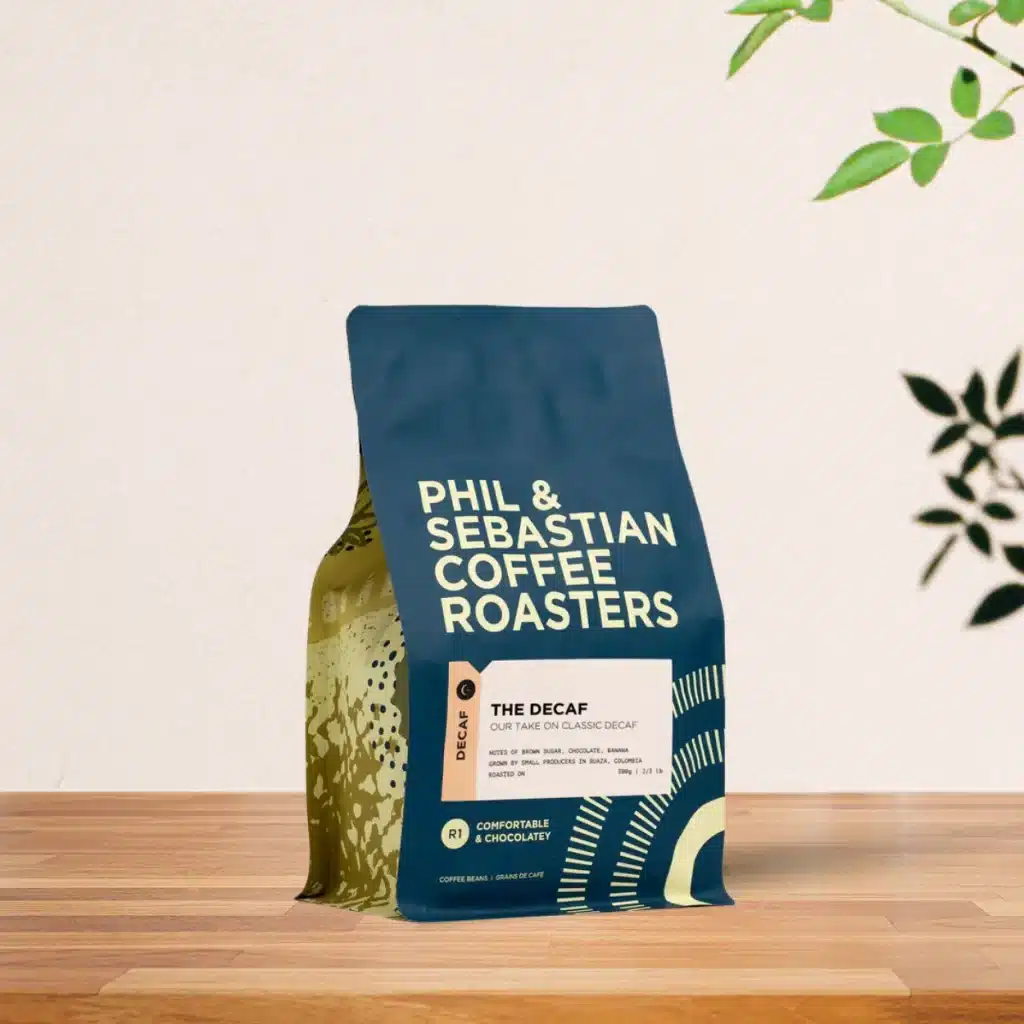
For those in the know, Phil & Sebastian’s “The Decaf Whole Bean” is synonymous with refined taste. Harmonizing caramel-hued sweetness with rich cocoa notes, this coffee doesn’t hold back. Additionally, delicate banana undertones grant it an unexpected yet delightful twist.
Coffee Highlights:
- Decaffeination using the natural DESCAFESOL method with mountain water and sugar cane.
- Freshness is preserved by freezing green coffee.
- Espresso brewing parameters: 18.8g coffee for 40g espresso brewed at 201°F and 125 psi for 33 seconds.
- Ethyl Acetate decaf process, leveraging its unique chemical properties over water for caffeine extraction.
- Superior-grade coffee beans, freshly harvested and shipped biannually from Colombia.
Cooper’s Cask Coffee – Organic Ethiopia Decaf Coffee
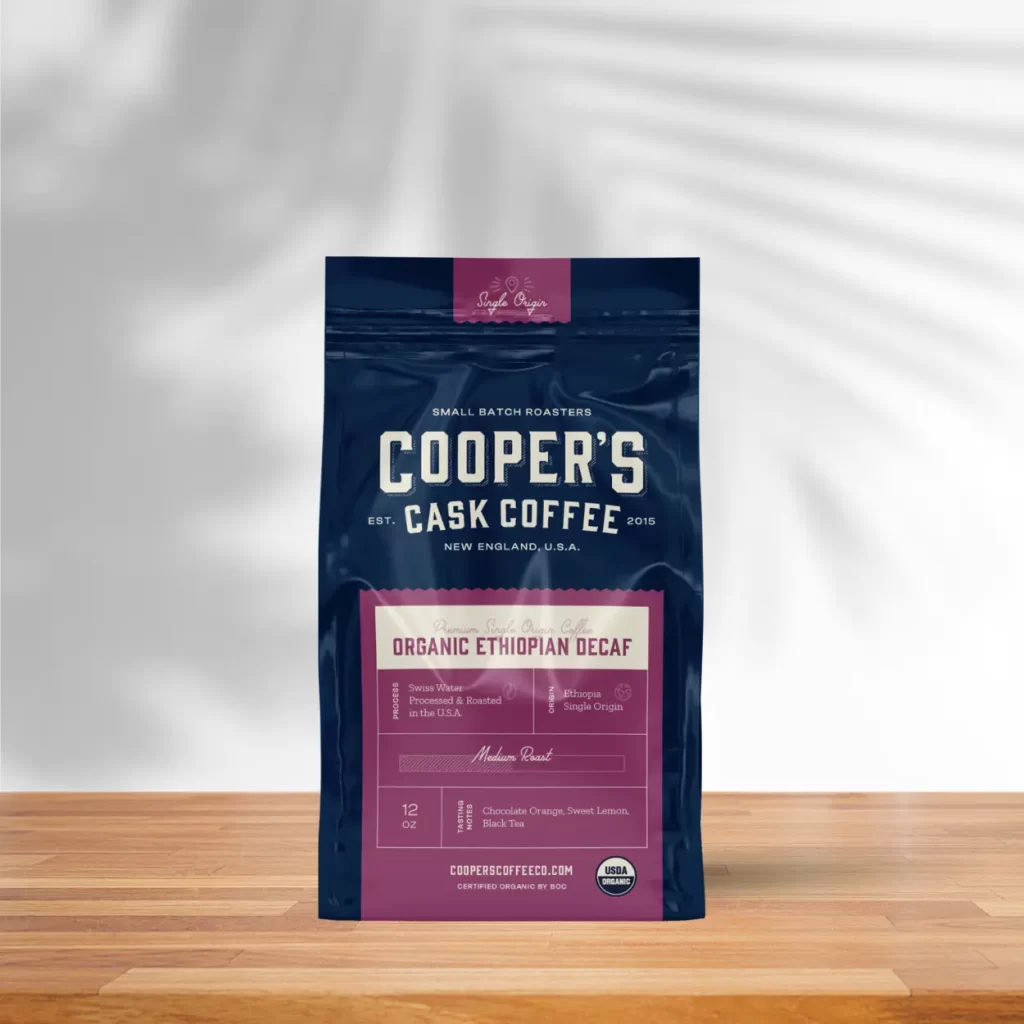
Cooper’s Cask Coffee introduces the world to an ethereal dance of flavors. Their Organic Ethiopia Decaf Coffee delights with its dynamic aroma and multifaceted taste. It’s a seamless symphony of chocolate orange, sweet lemon, and deep black tea tones.
Coffee Highlights:
- Organic decaffeinated Ethiopian single origin.
- Medium roast with flavors of chocolate orange, lemon sweetness, and black tea.
- Processed using the Swiss Water Method.
- Roasted and processed within the United States.
- Emphasizes on preserving original flavor with Swiss Water Process.
Equator’s Decaf Organic Blend Whole Bean
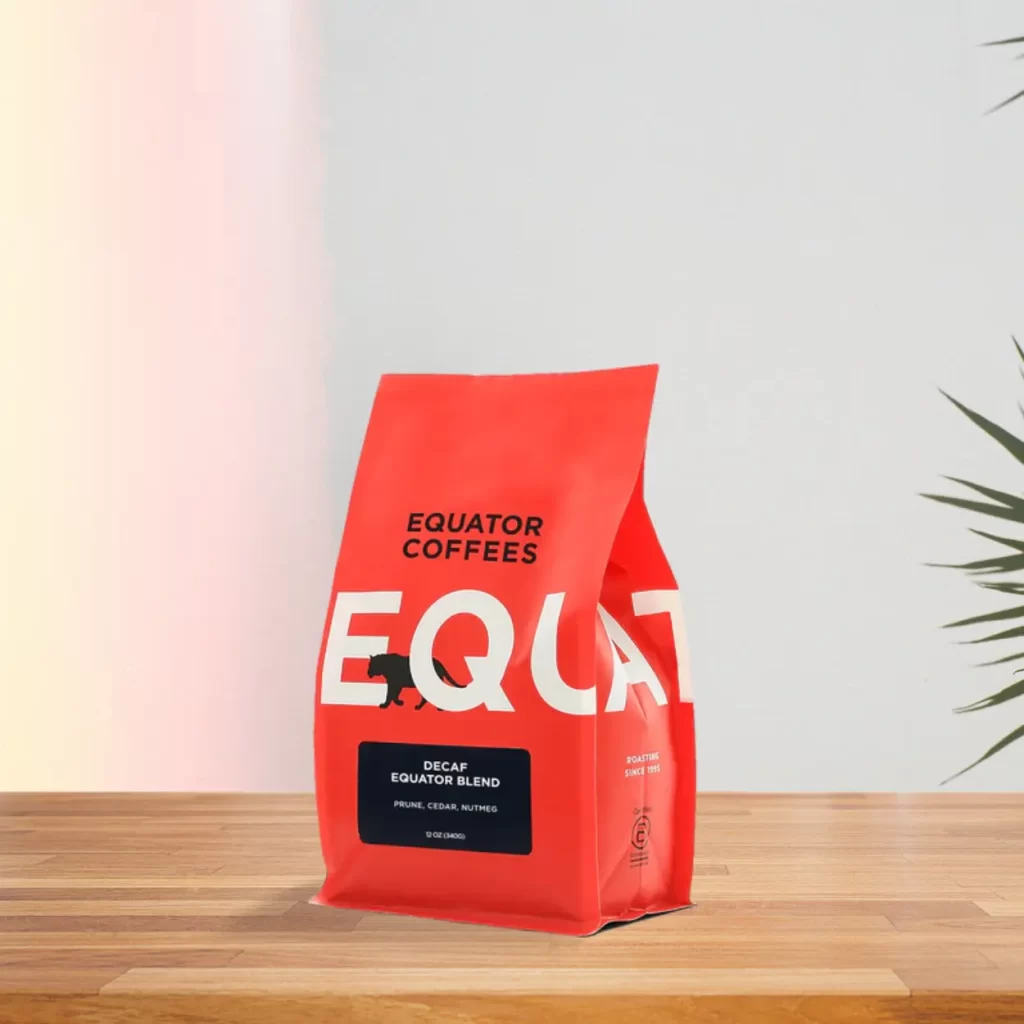
Equator’s Decaf Shakeout Organic Blend provides coffee aficionados with an immersive experience. Sourced from the fertile grounds of Chiapas & Oaxaca in Mexico, it mesmerizes with nectarine, milk chocolate, and roasted almond flavors. Truly, this blend is a testament to Equator’s commitment to unparalleled quality and sustainability.
Coffee Highlights:
- Medium Dark roast level.
- Coffee beans from Chiapas & Oaxaca, Mexico.
- Processed using the water method of caffeine extraction.
- Altitudes of cultivation ranging between 2,950 to 4,925 feet.
- Officially certified organic, embodying sustainable practices that have a positive planetary impact.
Swiss Water Decaf Whole Bean – Medium Roast by Nostalgia Coffee Roasters
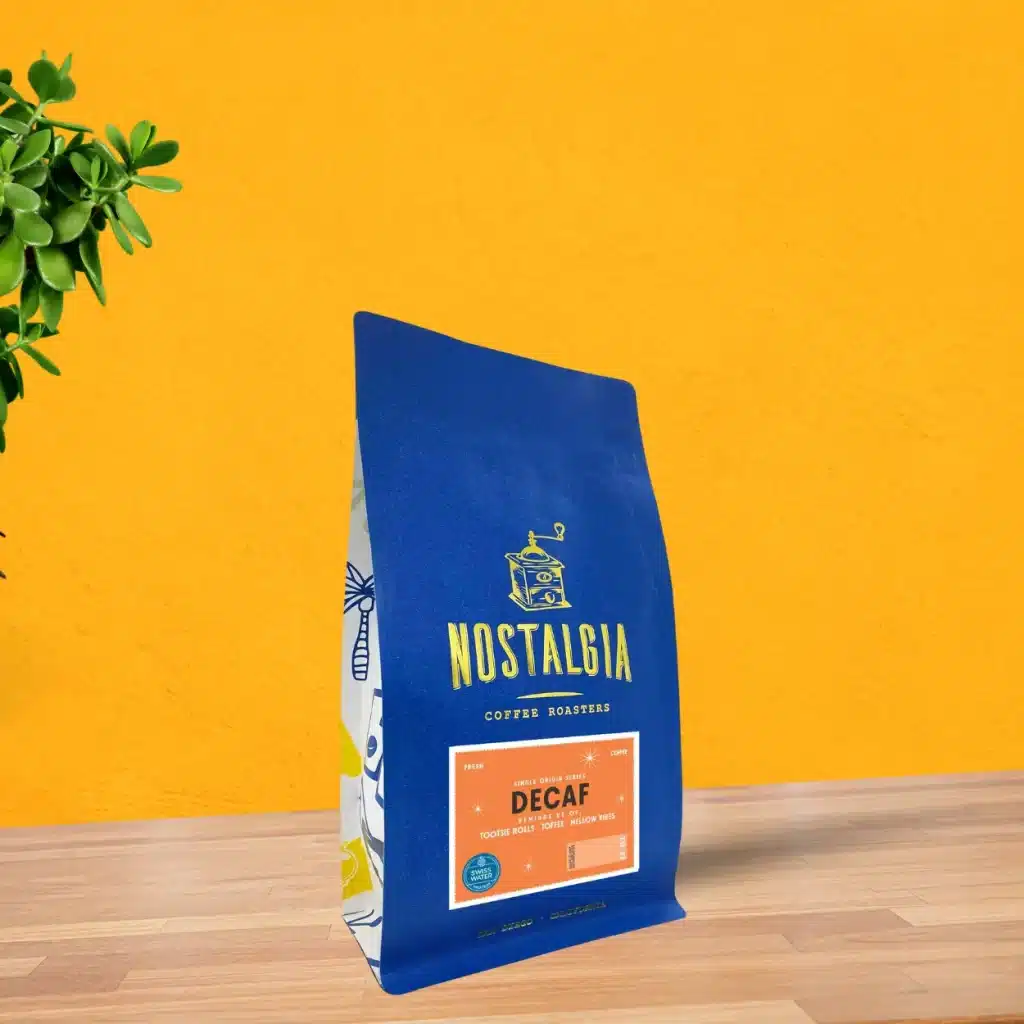
With Nostalgia Coffee Roasters’ Swiss Water Decaf, coffee lovers can revel in the legacy of decaffeinated brews. This unique medium roast coffee, sourced from Brazil, pays tribute to traditional flavors but with an intriguing twist. It’s a treat for those evenings when the cravings demand the rich notes of coffee but not the energetic punch of caffeine.
Coffee Highlights:
- Single Origin Brazil Decaf.
- Medium Roast, processed using the Swiss Water method.
- Originates from Mexico with diverse coffee varieties.
- Grown at various altitudes.
- Preserves traditional decaf flavors, providing an outstanding flavor profile.
Organic Decaf House Blend Whole Beans by Intelligentsia Coffee
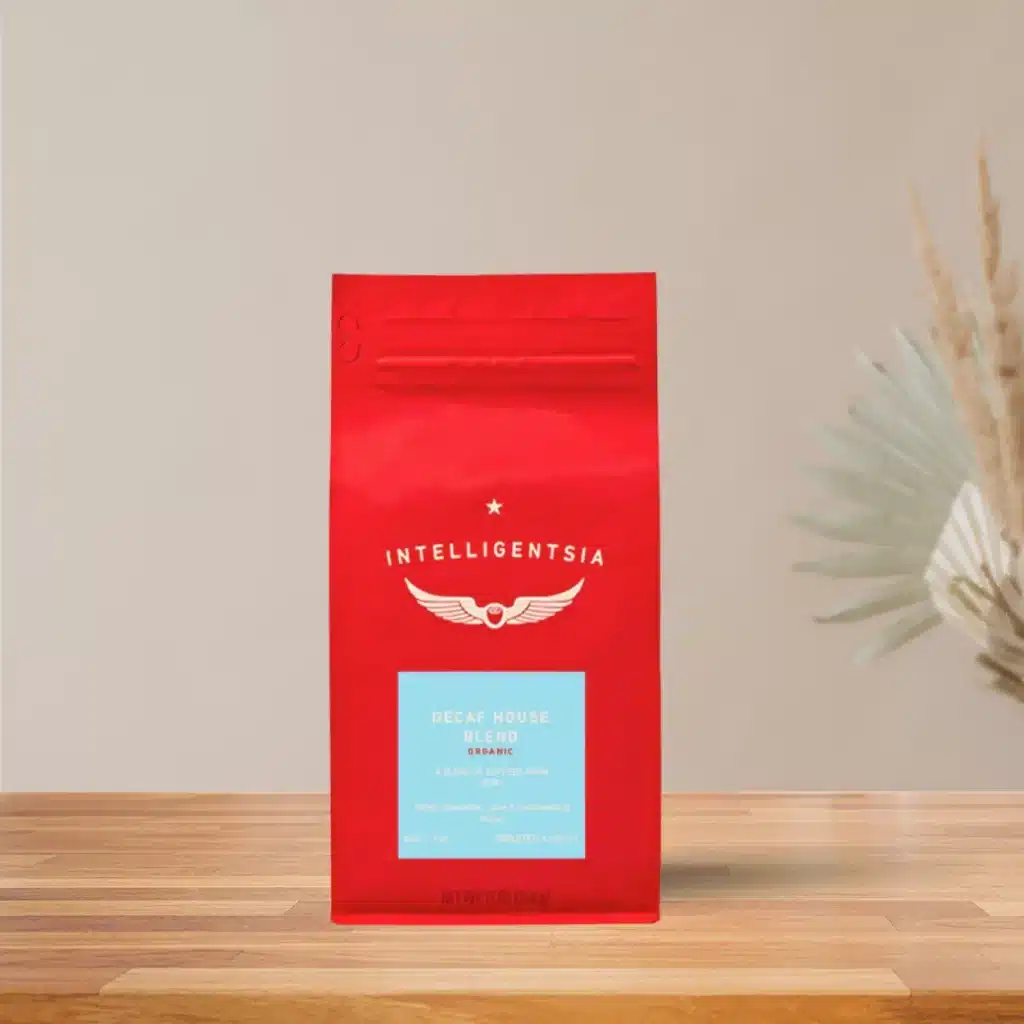
Intelligentsia Coffee offers a trip down the lanes of taste and tradition with their Organic Decaf House Blend. This coffee beckons with its rich flavor profile, blending chocolate undertones with zesty lime hints. Every sip is a reminder of Intelligentsia’s dedication to quality and direct relationships with farmers since 2002.
Coffee Highlights:
- Decaf type with origins traced back to Mexico and Peru.
- Flavor profiles of apple and raw sugar.
- Washed processing method and dried using the raised bed technique.
- Harvested between June and August 2021.
- Direct relationships with farmers, ensuring a commitment to excellence since 1995.
Coffee enthusiasts, whether you’re a seasoned aficionado or someone embarking on your decaf journey, these brands promise an experience like no other. Selecting the best whole bean decaf coffee can be an overwhelming task, but the richness and variety of flavors these brands offer to make the choice just a tad bit easier.
Understanding Decaf: The Basics
Decaf coffee has grown in popularity as a great alternative for those who love the rich taste of coffee but wish to avoid its stimulant properties. With the rising demand for decaf whole-bean coffee, there’s much to learn about its production, processing methods, and the various myths that surround it. This article dives deep into the realm of whole bean decaf coffee to provide insights and debunk misconceptions.
What Makes Coffee Decaf

The term “decaf” stands for “decaffeinated,” which means that the coffee beans have undergone a specific process to remove most of the natural caffeine present in them. It’s essential to note that decaf coffee isn’t entirely caffeine-free. Instead, the caffeine content is significantly reduced, usually containing about 1-2% of the original caffeine content. This reduction makes decaf a suitable choice for individuals who are sensitive to caffeine or those who prefer to limit their intake. (1)
- Decaffeination: A specialized process that extracts caffeine from coffee beans, either using solvents, water, or carbon dioxide.
- Not Completely Caffeine-Free: Typically retains 1-2% of the original caffeine content.
- Ideal For: Caffeine-sensitive individuals or those desiring a late-night cup without the jitters.
Decaf Processing Methods

Several methods are employed to decaffeinate coffee beans, each with its unique approach and resulting flavor profiles:
- Solvent-Based Methods: Two primary solvents are used—methylene chloride and ethyl acetate. Coffee beans are soaked in water to expand, and then the solvent is introduced to bond with the caffeine molecules. After the process, the beans are heated to remove the solvent, leaving them decaffeinated.
- Water Processing: This technique entails immersing green coffee beans in heated water for the purpose of dissolving caffeine. Subsequently, the infused water is moved to a reservoir equipped with activated charcoal or carbon filters, which ensnare the caffeine molecules while permitting the passage of flavors and oils. The beans are then reintroduced to the water to reabsorb the extracted flavors.
- Carbon Dioxide (CO2) Process: Super-critical CO2 is used to extract caffeine. Here, CO2 is subjected to high pressure and temperature, making it behave both like a gas and a liquid. When passed through coffee beans, it effectively draws out the caffeine.
- Swiss Water Process: A water-soluble extract is created from soaked green coffee beans. This extract, containing the flavors but not the caffeine, is then reintroduced to a new set of beans. The process results in the migration of caffeine from the beans to the water, while the flavors remain intact.
The Myths & Facts about Decaf Coffee
Decaf coffee often comes under scrutiny due to various myths and misconceptions. Here’s a look at some of them:
- Myth: Decaf coffee is completely caffeine-free.
- Fact: As mentioned, decaf coffee typically retains 1-2% of its original caffeine content. The exact amount can vary based on the processing method and origin of the beans.
- Myth: Decaf coffee lacks flavor.
- Fact: The flavor profile of decaf coffee is influenced by the decaffeination process, origin, and roast level. Many decaf coffees boast rich and robust flavors comparable to their caffeinated counterparts.
- Myth: All decaf processes use harmful chemicals.
- Fact: While solvent-based methods do use chemicals, many of these solvents, like ethyl acetate, are naturally found in fruits and are safe in regulated amounts. Moreover, there are other methods, like the Swiss Water Process, that don’t rely on chemical solvents.
- Myth: Decaf is a modern invention.
- Fact: The process of decaffeination dates back to the early 1900s, making it over a century old.
Decaf whole-bean coffee provides a delightful option for those wishing to enjoy the nuanced flavors of coffee without the full force of its caffeine. As with any beverage, the key lies in understanding its production and choosing the right one to match individual tastes and preferences.
Tasting and Brewing the Perfect Decaf Cup
Despite the reduction in caffeine, decaf coffee still offers a plethora of flavors waiting to be unveiled. The key to unlocking the full potential of the best decaf coffee beans lies in perfecting the grind, mastering the water parameters, and honing one’s taste buds. Whether you’re a seasoned barista or just starting out, the following guide will help you enhance your decaf experience.
Selecting the Right Grind Size
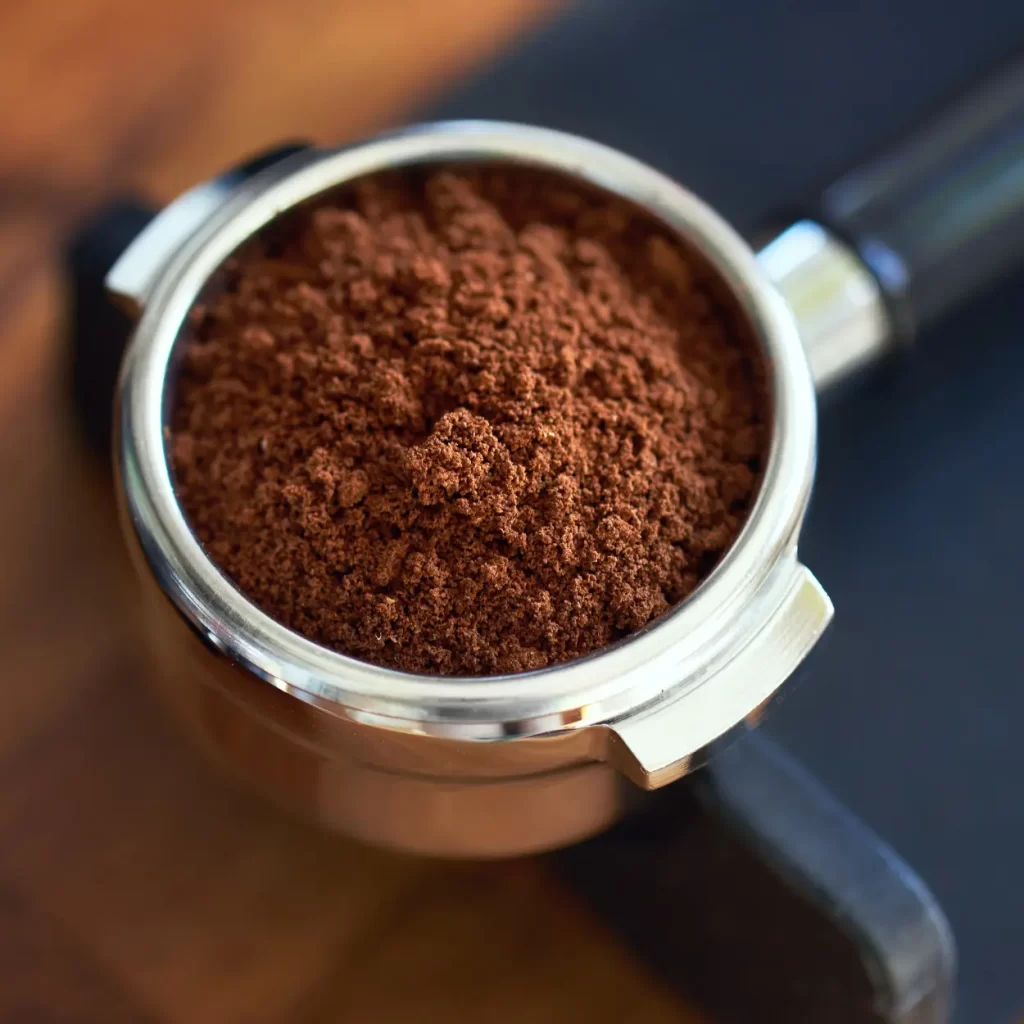
Grind size is a pivotal factor that influences the extraction of flavors from your decaf whole bean coffee. The ideal grind size varies based on the brewing method:
- French Press: Opt for a coarse grind, similar in texture to breadcrumbs.
- Drip Coffee: A medium grind, resembling beach sand, is usually best.
- Espresso: Aim for a fine grind, comparable to table salt.
- Cold Brew: A very coarse grind is ideal, often likened to peppercorns.
Matching the grind size with the brewing method ensures that the coffee extracts appropriately, preventing over-extraction (which leads to bitterness) or under-extraction (resulting in a watery cup).
Water Temperature and Brew Ratio
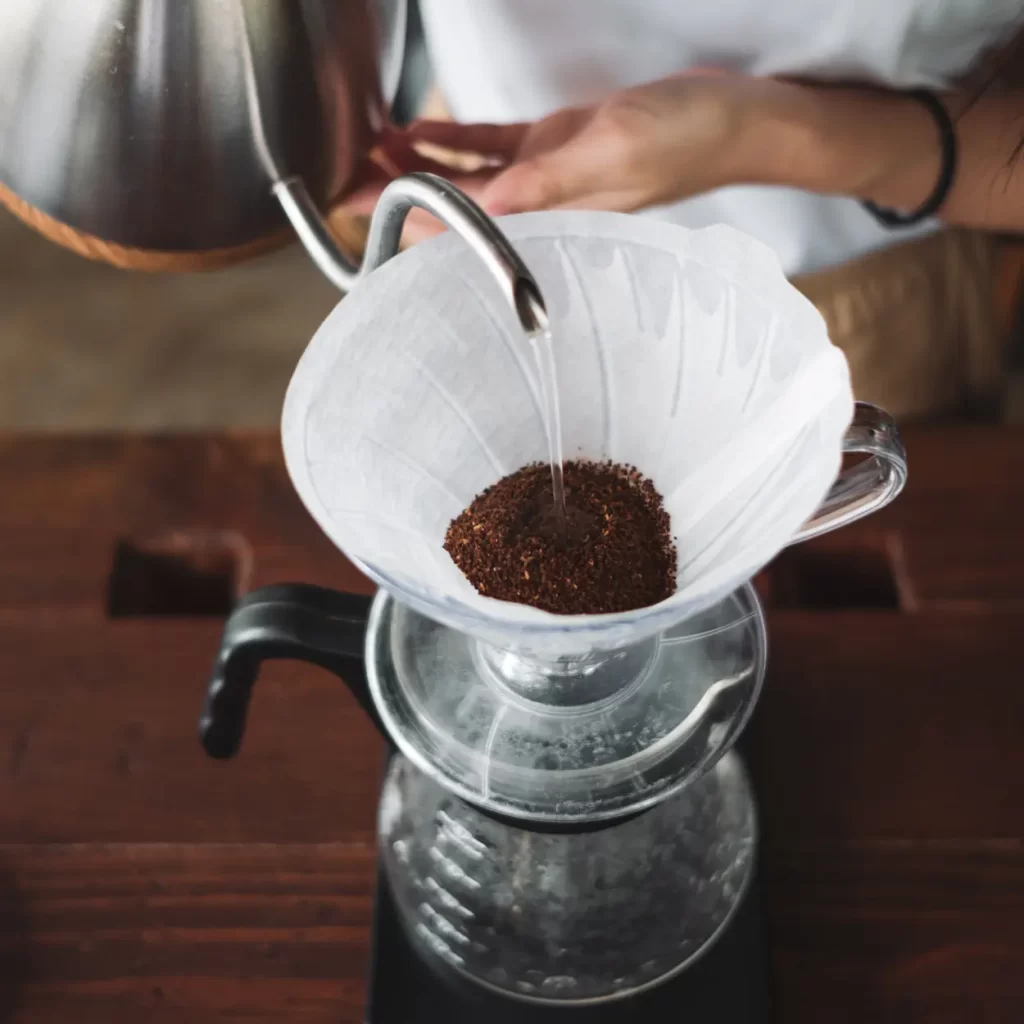
Water plays a crucial role in brewing. Two main factors to consider are the coffee brewing temperature and the coffee-to-water ratio:
- Temperature: Generally, the ideal temperature range is between 195°F to 205°F (90°C to 96°C). Temperatures outside of this range can cause poor extraction. Investing in a good kettle with temperature control can be beneficial.
- Brew Ratio: This defines the amount of coffee used in relation to water. A common starting point is 1:15, meaning one part coffee to 15 parts water. However, this ratio can be adjusted to personal preference. Some might prefer a stronger brew at 1:12 or a lighter one at 1:17.
Remember, while these are good starting points, coffee brewing is an art. Feel free to adjust based on personal tastes.
Taste Notes to Look For in Decaf
Like its caffeinated counterpart, decaf coffee is rich in flavor notes, influenced by the bean’s origin, processing, and roast level. Here’s what to look out for:
- Fruity Notes: Some decaf coffees exhibit hints of berries, citrus, or tropical fruits.
- Chocolatey and Nutty: A classic profile for many coffees, these comforting flavors are often present in medium to dark roasts.
- Floral and Tea-Like: Especially in lightly roasted beans, these delicate notes might shine through, offering a sophisticated palate.
- Earthy and Woody: Such flavors can be dominant in certain beans, giving the coffee a grounded, rustic feel.
It’s also worth noting the acidity, body, and aftertaste. Acidity doesn’t refer to the pH level but to a bright, sparkly, sparkly quality. The body relates to the weight or thickness of the coffee on your palate. The aftertaste, often called “finish,” is the taste left on the palate after swallowing.
In conclusion, to savor a delectable cup of decaf, one must pay attention to the nuances of brewing and tasting. With patience and practice, you can consistently produce cups that showcase the best attributes of your chosen beans.
Decaf Coffee and Health: What You Need to Know
Decaf coffee, often misunderstood and occasionally overlooked, is more than just regular coffee minus the caffeine. This alternative is chosen by many due to health reasons, dietary choices, or simply a preference for less caffeine. When examining the health implications of drinking decaf whole bean coffee, it’s crucial to discern facts from myths and to understand how it stacks up against its caffeinated counterpart.
Benefits of Decaf Coffee
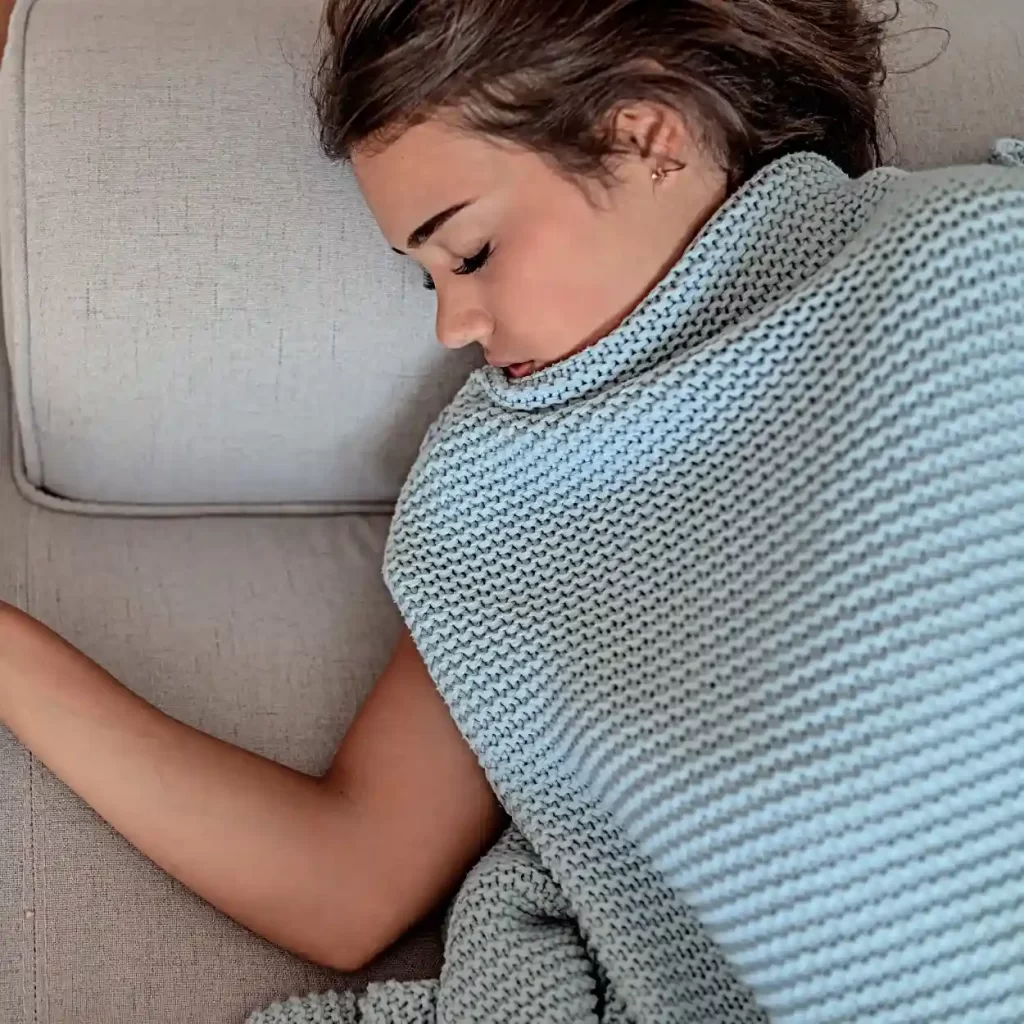
Decaf coffee isn’t merely about what’s been taken away (caffeine); it’s also about what remains:
- Antioxidants: Decaf coffee retains most of the antioxidants found in regular coffee. These compounds help fight free radicals in the body, promoting overall health. (2)
- Reduced Anxiety: Without caffeine, decaf coffee doesn’t contribute to anxiety or restlessness, making it suitable for individuals sensitive to caffeine.
- Better Sleep: Consuming decaf means less interference with sleep patterns, beneficial for those who wish to enjoy a cup in the evening without risking insomnia.
- Stomach-Friendly: Some individuals find that decaf is gentler on the stomach, reducing acid reflux or stomach discomfort that can sometimes be associated with caffeinated coffee.
- Bone Health: High caffeine consumption can lead to calcium loss. With decaf, this risk is minimized.
Misconceptions about Decaf and Health
With the rise in popularity of decaf coffee, several myths have surfaced:
- Chemical Usage: A common misconception is that all decaf coffees use harmful chemicals in the decaffeination process. While some methods utilize solvents, there are also natural and water-based processes.
- Caffeine-Free: Some believe decaf means zero caffeine. In reality, decaf does contain small amounts of caffeine, though it’s significantly less than regular coffee.
- Less Nutritious: Another myth is that decaf is devoid of the health benefits of regular coffee. As mentioned, many of the beneficial compounds remain intact even after decaffeination.
Comparing Decaf to Regular Coffee
When looking at decaf vs regular coffee, the primary difference is, of course, the caffeine content. But there are other aspects to consider:
- Flavor Profile: Some argue that the decaffeination process can affect flavor, though modern processes have become very efficient in retaining the bean’s original taste and aroma.
- Health Benefits: As discussed, both versions come packed with antioxidants, though regular coffee might have a slight edge in terms of quantity.
- Effects on the Body: Regular coffee can be a stimulant, improving alertness and concentration. Decaf offers a mellower experience without these stimulating effects.
- Versatility: For those who love coffee but want to limit caffeine, decaf offers the chance to enjoy more cups throughout the day without overloading with caffeine.
The choice between decaf and regular often comes down to individual preferences and health considerations. Both have their merits, and both offer a unique experience for the coffee enthusiast. Whether it’s a caffeinated jolt to start the morning or a soothing decaf to wind down in the evening, there’s a brew out there for everyone.
Pairing and Enjoying Decaf: The Culinary Side
When most think of coffee, they imagine a steamy morning cup or perhaps an afternoon pick-me-up. However, decaf coffee, with its reduced caffeine and rich flavors, offers an exciting avenue for culinary exploration. From perfect coffee flavor pairings to dessert creations and gourmet dishes, let’s uncover the delectable world of decaf in cuisine.
Best Food Pairings with Decaf
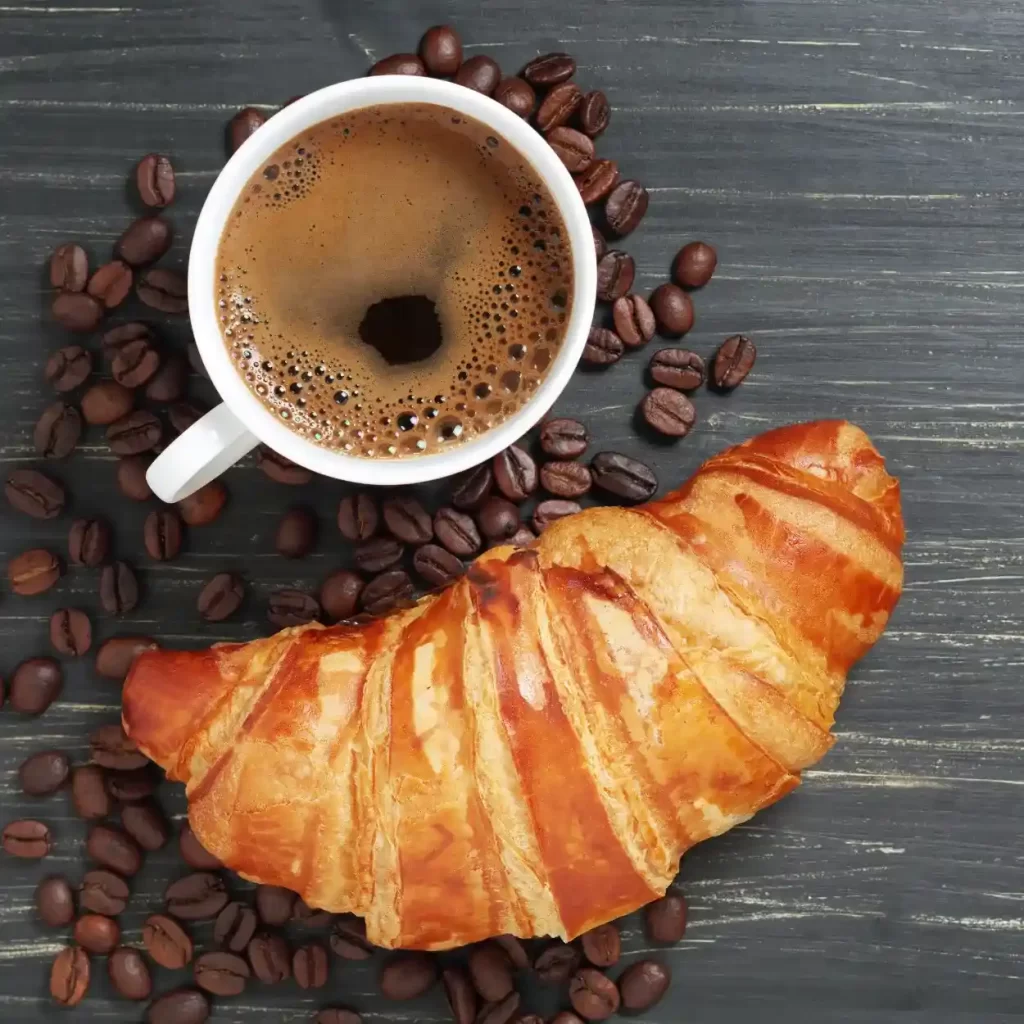
Pairing foods with decaf can elevate the experience of both the coffee and the cuisine. Some harmonious combinations include:
- Pastries and Breads: Think freshly baked croissants, banana bread, or buttery scones. The mild nature of decaf complements these baked goods, emphasizing their sweetness and buttery textures.
- Nuts and Dried Fruits: Almonds, walnuts, or dried apricots and figs can draw out the subtle notes in the best whole bean decaffeinated coffee.
- Cheeses: Mild cheeses, like brie or camembert, play well with the gentle flavors of decaf. A cheese board paired with a cup of decaf can be a delightful evening treat.
- Chocolate: Dark chocolate, with its bitter-sweet profile, is a classic pairing, but don’t shy away from trying milk or white chocolates too.
Creating Decaf Coffee-Based Desserts
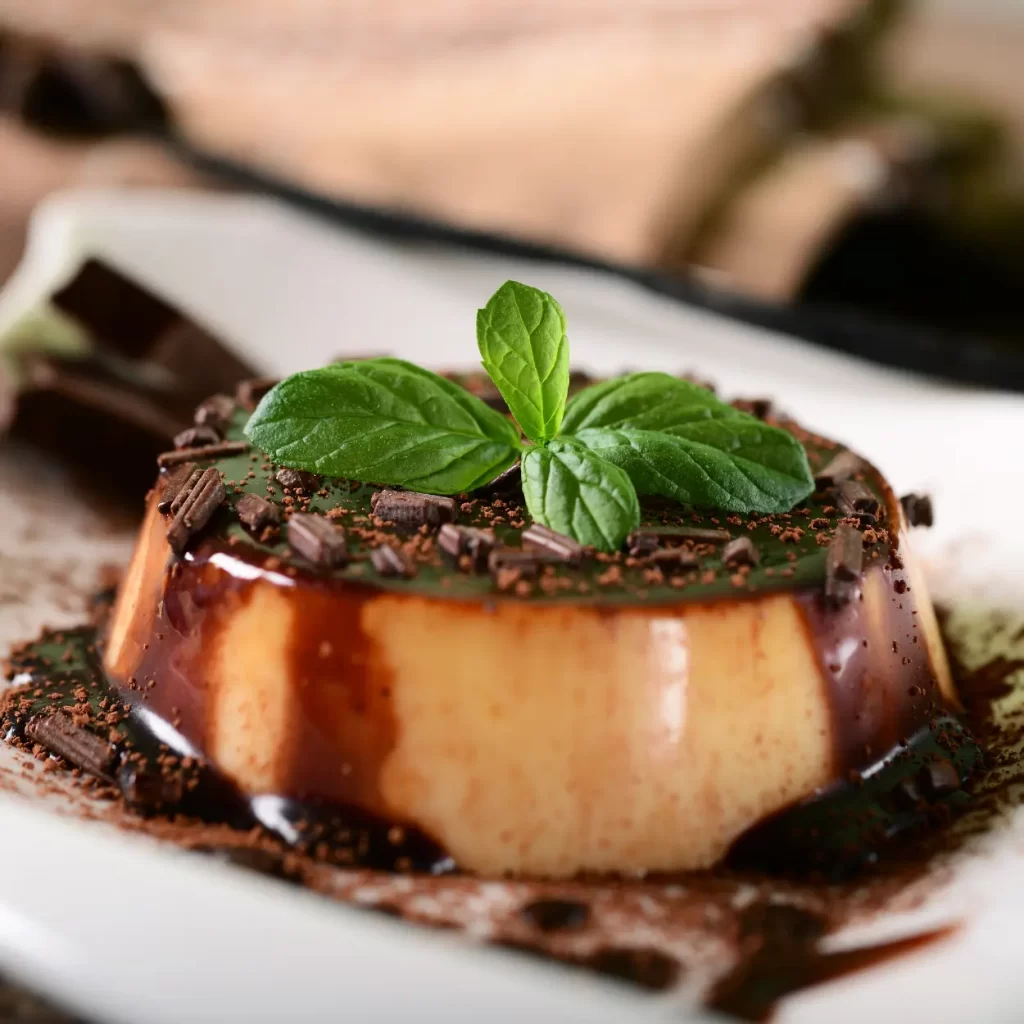
The rich flavor of decaf coffee can become the star of many desserts:
- Decaf Coffee Panna Cotta: This creamy Italian dessert infused with decaf coffee offers a balance of sweetness and the robust flavor of coffee.
- Decaf Coffee Chocolate Mousse: Incorporate brewed decaf into a traditional mousse recipe for a delightful twist. The combination of airy chocolate and coffee is sure to impress.
- Decaf Coffee Ice Cream: Using a custard base, integrate concentrated decaf brew for a refreshing and creamy treat.
- Tiramisu with Decaf: Substitute regular espresso with decaf to create a nighttime-friendly version of this beloved Italian dessert.
Incorporating Decaf in Gourmet Dishes
Coffee isn’t just for desserts. Decaf can be a secret weapon in savory dishes as well:
- Coffee-Rubbed Grilled Proteins: Use finely ground decaf coffee as part of a spice rub for steaks, chicken, or even tofu, giving them a deep, roasted flavor.
- Decaf Coffee Glaze for Roasts: Combine brewed decaf with ingredients like brown sugar, mustard, and vinegar to produce a glossy and flavorful glaze.
- Coffee-Infused Sauces: Enhance your sauces for pasta or meats with a splash of brewed decaf. The subtle coffee notes can add depth and richness to traditional recipes.
To sum up, the culinary potential of decaf coffee extends well beyond the coffee cup. Its unique flavor profile lends itself to a myriad of dishes, both sweet and savory. Next time you’re in the kitchen, consider reaching for that decaf and experimenting with its delightful and versatile taste.
Conclusion
In the vast realm of coffee, finding the right brew that resonates with your taste buds can be a delightful journey. When it comes to decaffeinated options, the quest becomes even more specific. However, after delving into the world of Best Whole Bean Decaf Coffee, it’s clear that quality, flavor, and freshness are not mutually exclusive from decaffeination. The ideal cup awaits those willing to explore, and the options for decaf whole-bean coffee are both abundant and satisfying. Whether you’re reducing caffeine intake for personal preferences or health reasons, there’s no need to compromise on the richness and aroma of a good brew. Here’s to enjoying every sip, caffeine-free. Cheers!
FAQ
How is decaf coffee made?
Decaf coffee is made by processing coffee beans to remove most of the caffeine using methods like the Swiss Water Process or solvent-based procedures.
Is decaf coffee caffeine-free?
Decaf coffee is not entirely caffeine-free, but it contains significantly lower levels of caffeine compared to regular coffee.
What are the top whole bean decaf brands recommended by experts?
The top whole bean decaf brands vary by preference, but some expert-recommended brands include Phil & Sebastian, Cooper's Cask Coffee, and Intelligentsia Coffee.
Can decaf coffee be brewed the same way as regular coffee?
Yes, decaf coffee can be brewed using the same methods as regular coffee.






